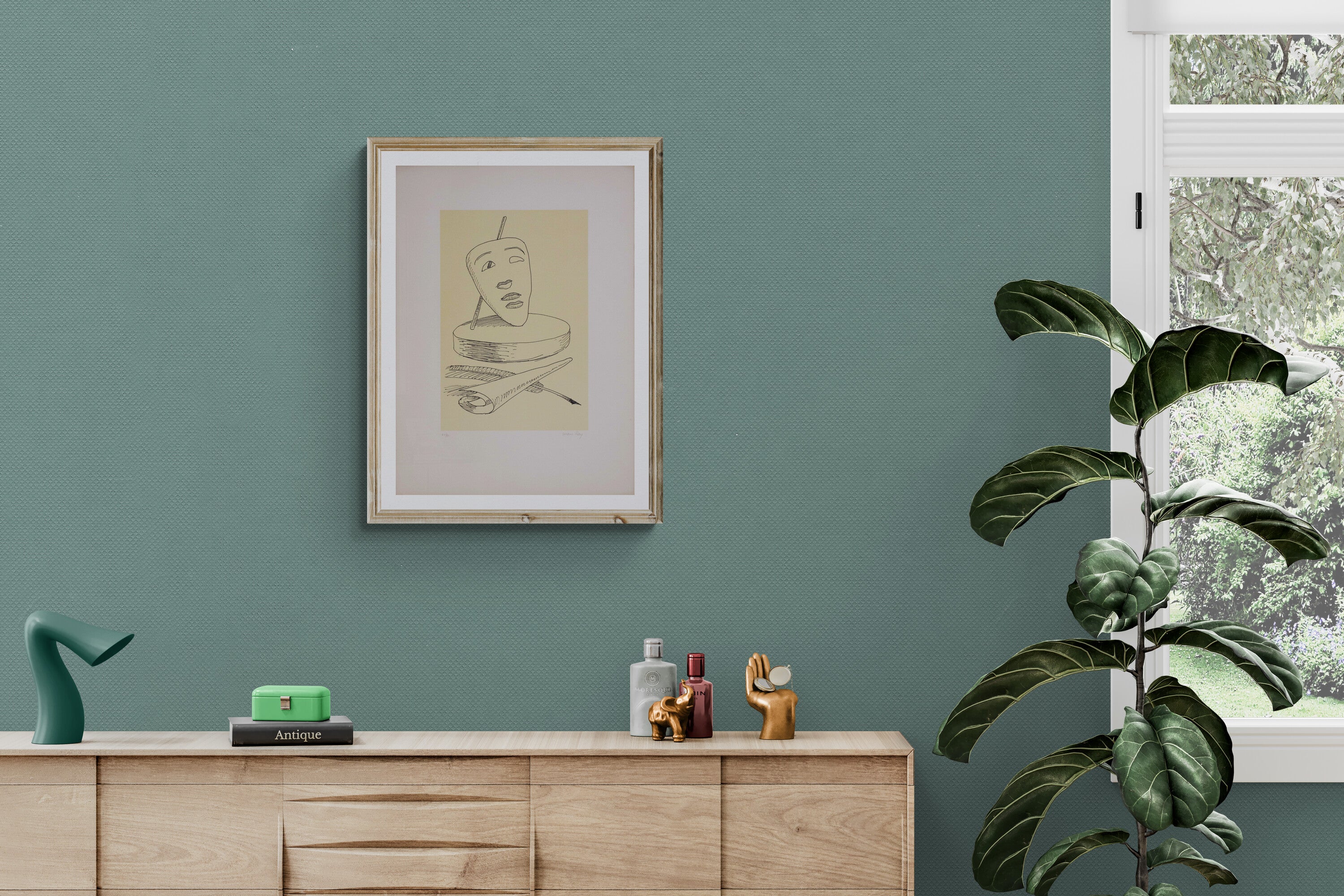BRUNO CASSINARI
Bruno Cassinari, born in Piacenza on October 29, 1912, was a prominent Italian artist whose work spanned the most important periods of 20th-century art. From a very young age, he showed a strong inclination for drawing and sculpture: he attended the School of Art of Piacenza and already in 1926, at only 14 years old, sculpted the first portraits of his mother in clay. But it was in Milan that his artistic vocation was consolidated. In 1929 he moved to the Lombard capital and enrolled at the Brera Academy of Fine Arts, where he graduated in 1938 under the guidance of the painter Aldo Carpi.
During his formative years, painter Cassinari developed his visual language by adhering to the Corrente movement, a group of anti-fascist intellectuals and artists (including Guttuso, Birolli, Morlotti, Treccani and Migneco) who opposed the rigid conventions of the 20th century and metaphysical painting. It was precisely within the Corrente context that he held his first solo exhibition, presented by Elio Vittorini, at the Bottega degli Artisti. In 1939 he won the Littoriali Prize and in 1941 the Bergamo Prize with The Portrait of Rosetta.
After the war, Cassinari continued to develop a personal language, balancing between expressionist figuration and cubist suggestions. In 1945 he founded, with Guttuso and Morlotti, the magazine Il '45, where art and politics directly interacted. The following year he joined the New Front of the Arts, a movement promoting committed painting capable of addressing the social issues of post-war reconstruction.
A key moment in his career came in 1949, when he moved to Antibes, France. There he met Picasso, who invited him to exhibit at the Antibes Museum, and mingled with artists such as Chagall, Braque and Matisse. This stay deeply influenced Cassinari's style: his use of color became richer, the composition more dynamic, and marine subjects, Mediterranean landscapes, and flowers became a stable part of his iconography. In those years he exhibited at the MoMA in New York, the Venice Biennale (where in 1952 he received the Grand Prize for Italian Painting), and participated in important exhibitions in Australia, Latin America, and throughout Europe.
In the 1960s, after his mother's death, he returned to his Gropparello, where he found a new creative dimension. The Piacenza countryside inspired a more intimate and warm painting, while he continued to receive important commissions: stained glass windows for the church of San Domenico in Siena, works for Shell in London, an altarpiece for the church of Metanopoli. But Cassinari did not limit himself to painting: he also explored graphics, illustration, and sculpture. Among his best-known artworks are portraits of Gina Lollobrigida, Carla Fracci, and Salvatore Quasimodo.
He remained artistically active until his last years, participating in solo and group exhibitions, producing drawings, etchings, and lithographs. He died in his Milan studio in 1992, leaving a vast and diverse artistic corpus, a testament to his tireless visual research.
Bruno Cassinari artworks
The artworks of Bruno Cassinari stand out for a pictorial language capable of combining emotional impulses and rigorous formal structures. From the beginning, his style is rooted in expressionism, but soon finds a dialogue with cubist synthesis, which he reinterprets in a lyrical key. His paintings present distorted, simplified forms, but always connected to a real world: he is never an abstract painter in the strict sense, preferring to define himself as “abstract-concrete”.
Among his most significant artworks are female nudes, still lifes, views of the port of Antibes, hill landscapes of Gropparello, and family scenes full of symbolism. Color plays a central role: lively, bright, emotional, but also capable of dark and dramatic tones. Cassinari manages to infuse his canvases with an energy born from a balance between composition and improvisation, matter and spirit.
A lesser-known but important aspect of Cassinari's work is his graphic production: etchings, lithographs, gouaches, book illustrations. He often accompanied poetic or literary texts, from Catullus to Tasso, from Elio Vittorini to Anne Frank, showing a rare ability to translate the rhythm and feeling of the written word into image.
The variety of Bruno Cassinari's artworks reflects a long and coherent career, in which each phase left a distinctive mark. From the portraits of the early years to the sacred painting of the 1980s, passing through the chromatic explosions of the French seascapes and the poetic atmospheres of the Piacenza countryside, Cassinari built a personal, recognizable, and always lively visual universe.
Bruno Cassinari valuations
The valuations of Bruno Cassinari in the art market reflect the established appreciation for an artist who traversed the 20th century while maintaining expressive coherence. His paintings are present in important public and private collections, both in Italy and abroad, and are frequently offered at modern art auctions.
The artworks on canvas made between the 1940s and 1970s, especially the nudes, still lifes, and landscapes of Antibes, are among the most sought after. Valuations for these artworks can range from 5,000 up to over 40,000 euros, depending on size, subject, and provenance. Canvases awarded or exhibited in historic exhibitions such as the Biennales or Documenta have an even higher value.
Cassinari's graphic production also has a good market. Lithographs and etchings, often signed and numbered, can be found with valuations ranging from 300 to 2,000 euros, offering broader access to his art. In particular, the series illustrated for literary artworks and floral or sacred subjects are among the most coveted by collectors.
The valuations of Bruno Cassinari are currently stable and moderately growing, especially thanks to the work of foundations, galleries, and critical publications that have rediscovered and enhanced his contribution to 20th-century Italian art. The publication of the general catalog in 1998 by Electa also allowed a clearer attribution and evaluation of the artworks.
























